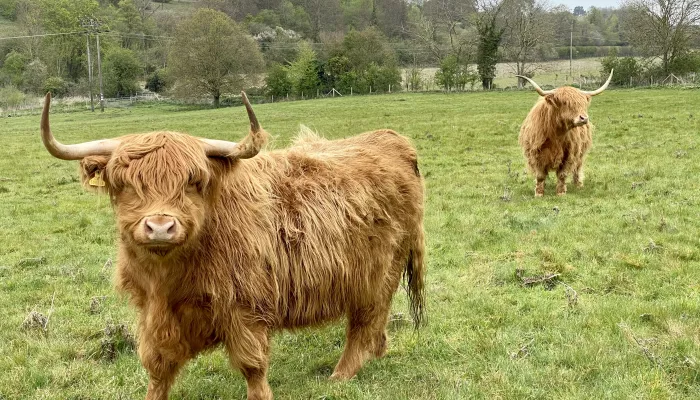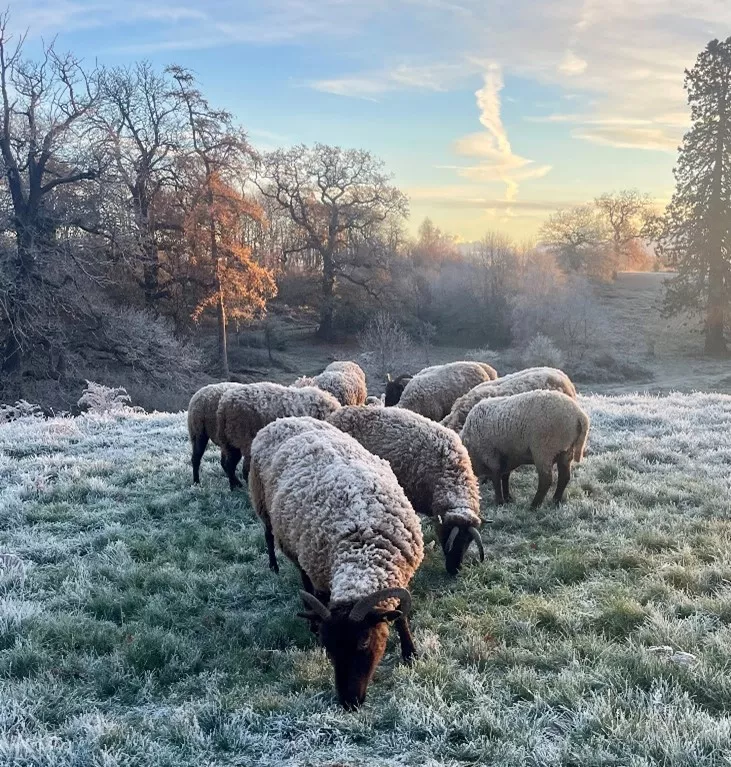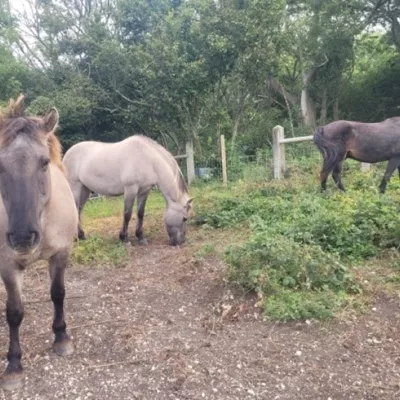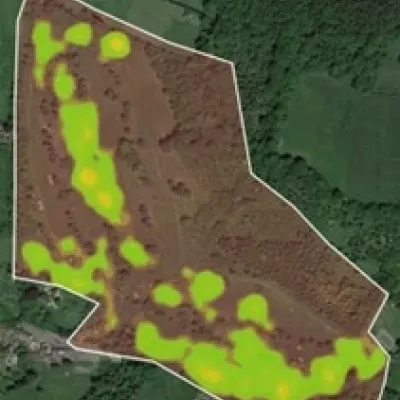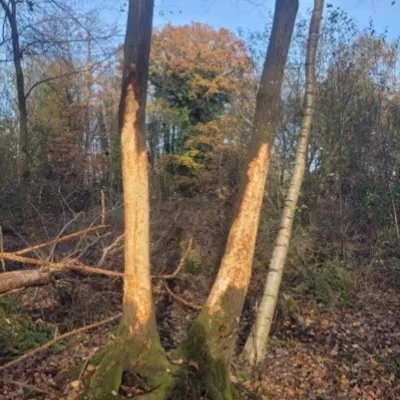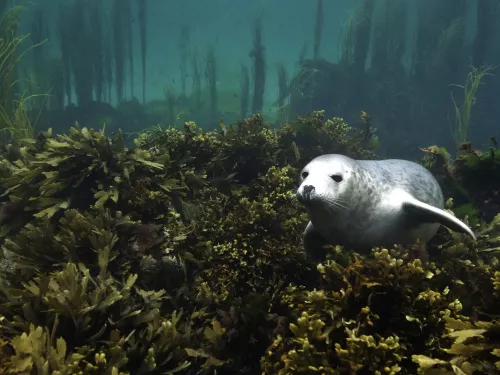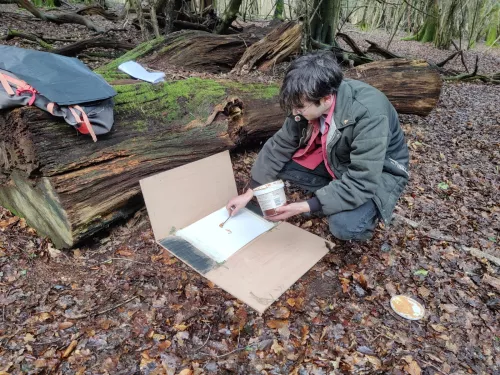The changes made to these winter food sources by grazing are great for wildlife. The holly responds to grazing by getting thornier, keeping predators out. The dead wood and flaky bark on the stripped trees become home for wood-boring beetles, whilst the gorse sends out lots of new side shoots which will be full of flowers in time.
Behavioural adaptations
When it comes to finding food in the winter it can be difficult – especially if it snows. Each grazing species expresses a different level of object permanence, aka ‘out of sight, out of mind’ ability.
Cows have a basic level of this skill. They can recall the location of food sources and navigate their environment based on past experiences. Yet when everything is covered in a sheet of white, it can be hard to find and remember where the grass was. During this time, you will most likely see cows turn to browsing leaves from the trees – a visible food source amid the winter landscape. On the other hand, ponies, sheep, and goats showcase a notable proficiency in object permanence skill, remembering locations and navigating obstacles to reach hidden food sources beneath the snow. You will regularly see these animals pawing at the snow to uncover the grass beneath as well as ponies using their hooves to crack the ice covering water troughs and shallow ponds.
The wildlife follows along behind. Birds such as robins and even buzzards forage in the open areas of grass and disturbed ground uncovered by the sheep and pigs, while all animals benefit from the ponies opening up water supplies.
You can find out more about our approach to conservation grazing here!


